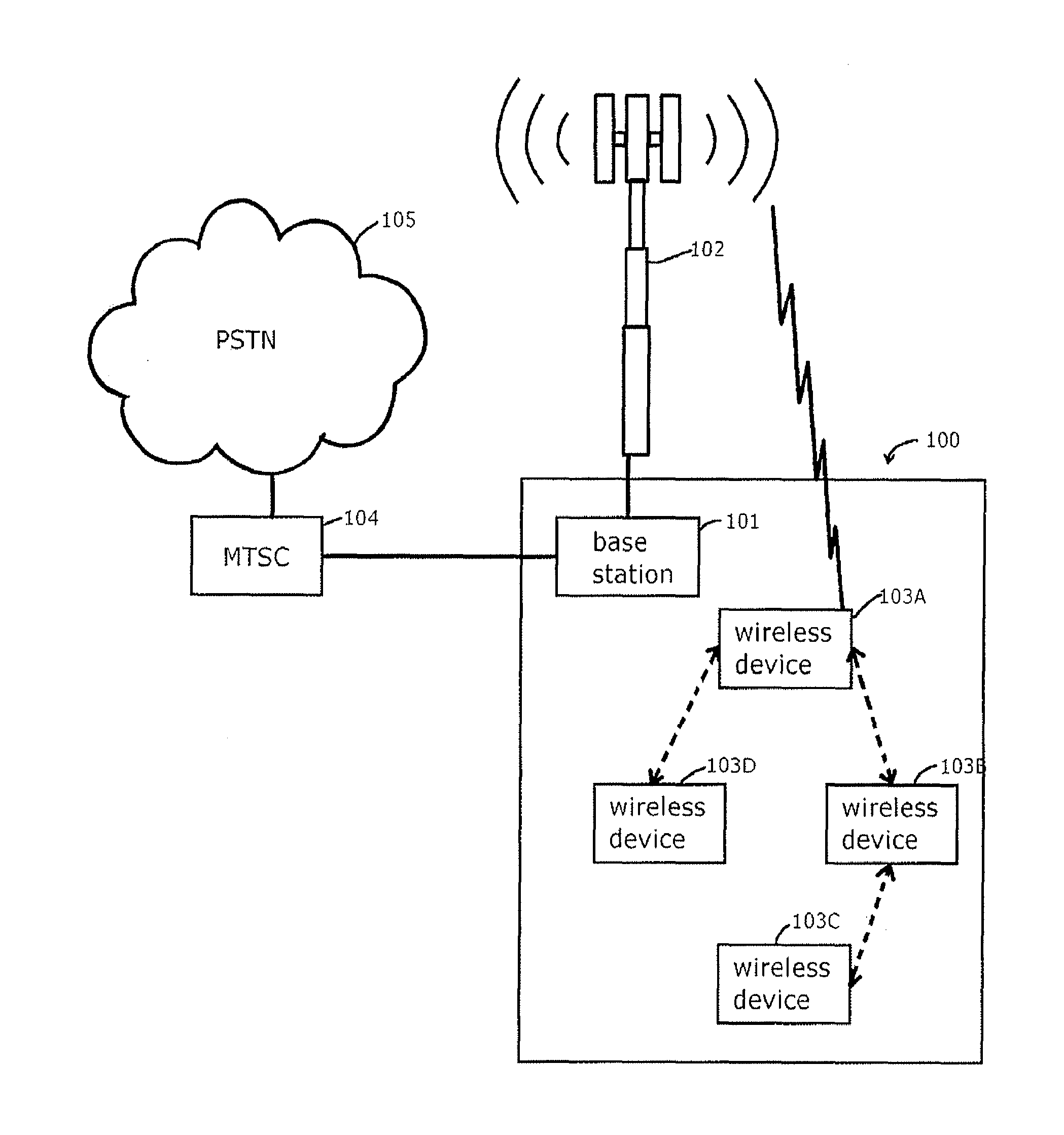Wireless communication methods, systems, and computer program products
a technology of wireless communication and communication methods, applied in the field of wireless communication networks, can solve the problems of consuming precious battery power of the device, more interference in the neighboring cells, and weak signal strength/quality in some areas of the cell to meet the throughput demand of users
- Summary
- Abstract
- Description
- Claims
- Application Information
AI Technical Summary
Benefits of technology
Problems solved by technology
Method used
Image
Examples
embodiment 23
24. The method as recited in embodiment 23, wherein:
said second wireless device is not utilized and said first wireless device communicates indirectly with said base-station via said third wireless device; or
several wireless devices with functionality similar to said second wireless device are utilized and said first wireless device communicates indirectly with said base-station via said second wireless device, said several wireless devices with functionality similar to said second wireless device, and said third wireless device.
25. The method as recited in embodiment 23, wherein:
said first wireless device has some overlapping functionality with said second wireless device and said third wireless device;
said second wireless device has some overlapping functionality with said first wireless device and said third wireless device; and / or
said third wireless device has some overlapping functionality with said first wireless device and said second wireless device.
26. The method as recited...
embodiment 39
40. The computer program product as recited in embodiment 39, further comprising the programming instructions for:
said second wireless device is not utilized and said first wireless device communicates indirectly with said base-station via said third wireless device; or
several wireless devices with functionality similar to said second wireless device are utilized and said first wireless device communicates indirectly with said base-station via said second wireless device, said several wireless devices with functionality similar to said second wireless device, and said third wireless device.
41. The computer program product as recited in embodiment 39, further comprising the programming instructions for:
said first wireless device has some overlapping functionality with said second wireless device and said third wireless device;
said second wireless device has some overlapping functionality with said first wireless device and said third wireless device; and / or
said third wireless device ...
embodiment 1
2. The method as recited in embodiment 1, further comprising:
the first wireless terminal choosing to participate as a router, wherein:
the first wireless terminal deciding whether it will act as a relay or a sink, wherein:
the first wireless terminal transmitting a first metric describing cellular signal strength and quality seen by a nearby sink if acting as a relay; or
the first wireless terminal transmitting a second metric describing cellular signal strength and quality seen by the first wireless terminal if acting as a sink.
3. The method as recited in embodiment 1, further comprising:
the first wireless terminal choosing to participate as a router based on at least one of the following factors: quality of nearby sinks and relays, quantity of nearby sinks and relays, battery life, source of power, average throughput, bandwidth usage, bandwidth needs, bandwidth availability, type of device, level of mobility, time of day, subscription fees, user profile, non-cellular signal strength ...
PUM
 Login to View More
Login to View More Abstract
Description
Claims
Application Information
 Login to View More
Login to View More - R&D
- Intellectual Property
- Life Sciences
- Materials
- Tech Scout
- Unparalleled Data Quality
- Higher Quality Content
- 60% Fewer Hallucinations
Browse by: Latest US Patents, China's latest patents, Technical Efficacy Thesaurus, Application Domain, Technology Topic, Popular Technical Reports.
© 2025 PatSnap. All rights reserved.Legal|Privacy policy|Modern Slavery Act Transparency Statement|Sitemap|About US| Contact US: help@patsnap.com



